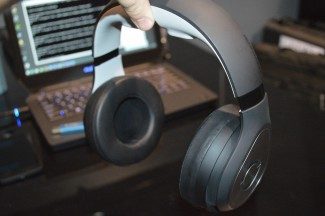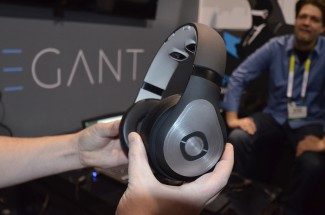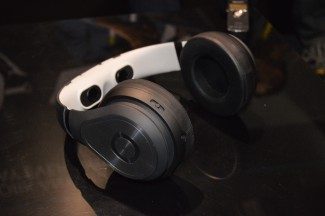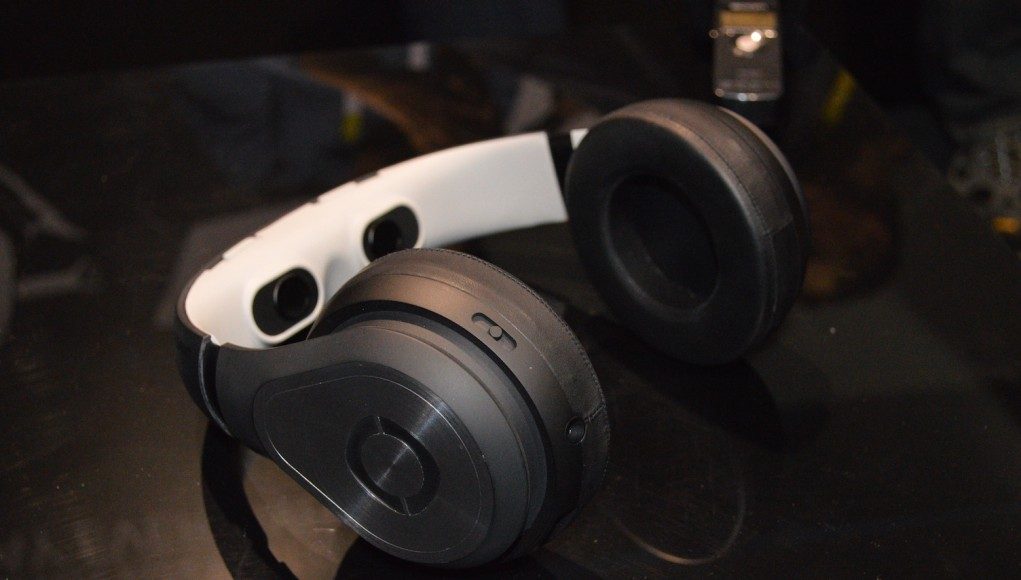We caught up with Allan Evans, CTO at Avegant, home of the unique personal media viewer – the Glyph, to talk about their new ‘near final’ design and the future of the device.
 CES 2015 has been all about picking up the 2014 story where we left off for Road to VR. Last year, a small startup called Avegant invited us to look at an early prototype of a new HMD sporting a unique type of display technology in the field. The device, known as the Glyph, is a personal media HMD with a stereoscopic display they call ‘virtual retina’ – a DLP based system with custom optics. The device’s form factor was equally as interesting as the technology that powered it, being essentially a set of headphones that flipped down in front of your face to provide the display.
CES 2015 has been all about picking up the 2014 story where we left off for Road to VR. Last year, a small startup called Avegant invited us to look at an early prototype of a new HMD sporting a unique type of display technology in the field. The device, known as the Glyph, is a personal media HMD with a stereoscopic display they call ‘virtual retina’ – a DLP based system with custom optics. The device’s form factor was equally as interesting as the technology that powered it, being essentially a set of headphones that flipped down in front of your face to provide the display.
When I first met them, they were holed up in a hotel suite demoing their wares. The first thing that struck me about Avegant was the boundless enthusiasm and passion for their product, the belief they were on to something special was palpable and infectious.
 Yesterday, the first full day of CES 2015, we met them again – this time at a smart booth in the Sands Convention Center in Las Vegas. Amazingly, despite an arduous year of fundraising and industrial design revisions, that infectious enthusiasm was still as strong as ever.
Yesterday, the first full day of CES 2015, we met them again – this time at a smart booth in the Sands Convention Center in Las Vegas. Amazingly, despite an arduous year of fundraising and industrial design revisions, that infectious enthusiasm was still as strong as ever.
We met with Allan Evans, Chief Technology Officer at Avegant and one of the founding members. The company had brought with them the first look at what they see as a near-retail industrial design prototype. A refined and simplified form factor with the same essential brief, accessible, plug and play media playback on the go.
See Also: CES 2015: Avegant Glyph, New Design Nearing Consumer Level Fit and Finish
 Evans told us that the company is preparing for the final road to retail with initial production tests gearing up through Q1/2 2015 with a rough (and possibly changeable) launch window of autumn / fall of this year. He explained that the team had been through an extensive and exhaustive set of designs, taking into account ergonomic data from all walks of human kind to ensure that their unique form factor worked with as many people as possible. He also talked up the tweaks to the system’s optics, cleaning up the edged of the virtual screen for a sharper view.
Evans told us that the company is preparing for the final road to retail with initial production tests gearing up through Q1/2 2015 with a rough (and possibly changeable) launch window of autumn / fall of this year. He explained that the team had been through an extensive and exhaustive set of designs, taking into account ergonomic data from all walks of human kind to ensure that their unique form factor worked with as many people as possible. He also talked up the tweaks to the system’s optics, cleaning up the edged of the virtual screen for a sharper view.
The new design looks far more like something you’d expect to see at retail and their new in house designer, who originally worked at HTC designing accessories, has brought that triple-A look and feel expected of premium consumer electronics. The target price point remains $499 for pre-orders and $599 for the retail unit, so that fit and finish is oh so important.
We got to try out the plug-and-play capabilities of the device, throwing a functional prototype through it’s paces and it impressed. The improved optics are great and the user configurable diopter / IPD meant I could use the device flawlessly without my usual glasses on. Basically, anything that can output an HDMI signal can be viewed through this device, which these days is just about every smartphone out there. What’s more, the company are working on utilities to further easy navigation on your mobile device.
The final tease? Evans told us that version 2 of the Glyph is undergoing initial R&D right now, although precisely what we can expect from the next generation device Avegant aren’t talking about right now.







